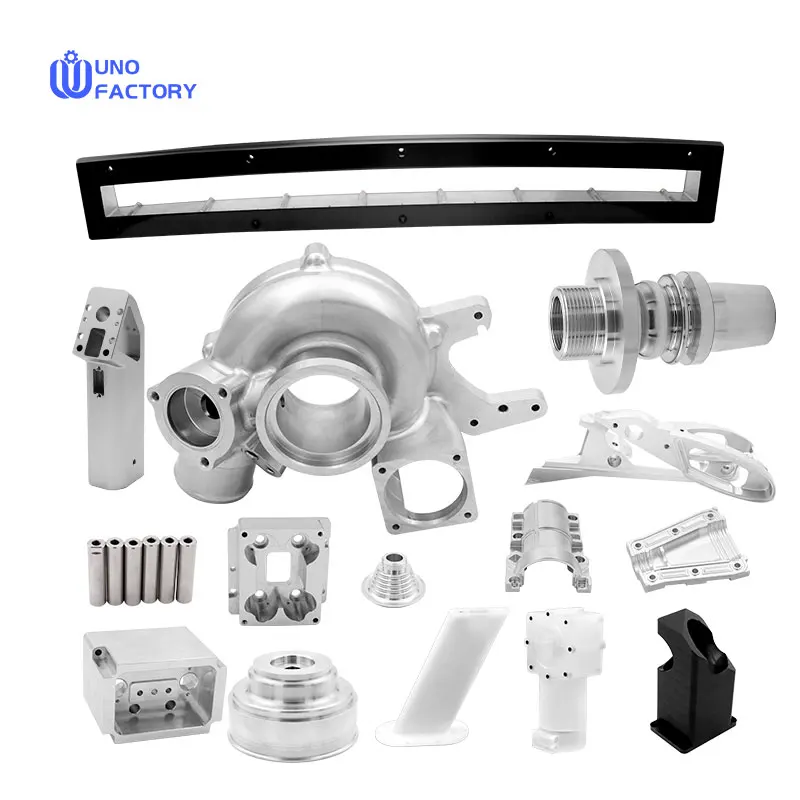Time to read: 6 min

Computer Numerical Control (CNC) machining has emerged as a faster and more efficient manufacturing strategy, replacing traditional manual machining in many aspects. This article delves into the principles, advantages, and applications of both CNC and manual machining, helping you choose the best method for your custom prototypes and end-use production parts.
Understanding the working principles of CNC and manual machining is crucial for a fair comparison.
Automated CNC machining relies on digital files containing cutting and tooling instructions. Various tools are required to fabricate machined parts, with engineers and machinists building digital tool libraries to interface with CNC machines.
The process begins with design in CAD software (Computer-Aided Design), where the 3D model determines the final part's required properties and dimensions. CAD-CAM software packages often come bundled, allowing seamless transition from design to manufacturing, eliminating the need for file translation.
Manual machines, such as bandsaws, drill presses, grinders, endmills, and lathes, are controlled by hand and require significant skill and experience. While manual machining can produce a wide range of prototyping items, it is more time-consuming and labor-intensive compared to CNC machining.
Comparing the advantages of each method provides insight into their suitability for different manufacturing needs.
CNC machining stands out for its versatility and precision. Industries rely on CNC for accurate part fabrication, efficient production, and consistent cuts. A skilled engineer can operate multiple CNC machines, making it ideal for complex and large-scale part production.
Controlled by computers, CNC machining is more reliable and faster than manual machining, with minimal scope for human error. It offers accuracy and speed in manufacturing.
CNC machines require fewer experienced operators, as one skilled machinist can manage multiple machines. They also demand low maintenance, making them cost-effective in the long run.
CNC machines ensure uniformity in design, repeating the same design accurately. They are safer to operate, with minimal physical interaction between operators and machines.
Despite the advanced capabilities of CNC, manual machining has its merits.
Manual machining is cost-effective for small production runs and low-budget operations, making it suitable for simple metal shapes and small-scale fabrication.
Manual machines are recommended for simple metal shapes due to their cost-effectiveness and the ability to handle small operations with precision.
Discussing specific CNC machines highlights their advantages over manual alternatives.
CNC milling is versatile for complex part manufacturing, using a rotating cylindrical tool to remove material from a solid block. CNC mills offer high precision and quality manufacturing across industries.
CNC lathes operate on precise design instructions to produce parts with various surface shapes. They are efficient in reducing human error and increasing the production of precise round shapes.
EDM uses thermal energy to remove workpiece material, suitable for intricate parts that manual machines cannot produce. It is more precise and efficient than manual machining.
CNC machining often results in lower overall costs due to higher accuracy, lower scrap rates, and reduced labor and maintenance requirements.
CNC machining has a lower scrap rate and requires less maintenance, making it more cost-effective than manual machining.
The precision and consistency of CNC machining have increased its demand worldwide, outpacing manual machining methods.
Several industries rely on CNC machining for their manufacturing needs:
Electronics manufacturers use CNC machining for housings, fixtures, PCBs, and jigs.
The automotive industry uses CNC machines for custom parts and prototyping, including gearboxes, axles, and valves.
CNC milling machines are used to manufacture rods, pins, and pistons that require tight tolerances and precision.
CNC machining is ideal for the medical industry, which demands uncompromising part quality and precision for complex medical equipment.
There is a clear distinction between CNC and manual machining. CNC machining offers accuracy, efficiency, and safety measures that surpass those of manual machining. For custom online CNC machining services, consider platforms like Unofactory, offering instant quotes and custom machined parts with full dimensional reports inspection and free DFM feedback.
How can we differentiate between a Manual Lathe vs CNC Lathe? Manual lathes require experience for precise machining, while CNC lathes offer high accuracy and complex machining without extensive experience.
What are the disadvantages of CNC machining? CNC machines are more expensive initially, and there is a risk of losing skilled labor as fewer workers are needed for operation.
Which is safer, CNC machining or manual machining? CNC machining is safer due to its automated nature, reducing physical interaction with machines and minimizing the risk of accidents.
Principles of CNC and Manual Machining
CNC Machining Principles
Manual Machining Principles
Advantages of CNC Machining vs Manual Machining
Advantages of CNC Machining
1. Versatility & Consistency
2. Reliability & Efficiency
3. Less Human Labor & Low Maintenance Requirement
4. Design Uniformity & Safety
Advantages of Manual Machining
1. Less Costly for Small Production
2. Good Choice for Simple Metal Shapes
Benefits of CNC Machines for Prototyping
CNC Mill Machine
CNC Lathe Machine
EDM (Electric Discharge Machine)
Cost Difference Between CNC Machining and Manual Machining
1. Less Overall Cost than Manual Machining
2. Low Scrap & Maintenance Issues
3. More Demand in Industry
Applications of CNC Machining
1. Consumer Electronics
2. Automotive Industry
3. Oil & Gas Industry
4. Medical Industry
Conclusion
FAQs




